Calibration Services
Electrical: Power, Attenuation and Gain
General
The Radio Frequency Laboratory of SCL can provide calibrations for RF, time and frequency equipment up to 40 GHz. In general, measurements are available to equipment fitted with coaxial connectors, and 50 Ω nominal characteristic impedance. Limited calibration service can also be offered for equipment with 75 Ω nominal characteristic impedance.
RF Power Meters
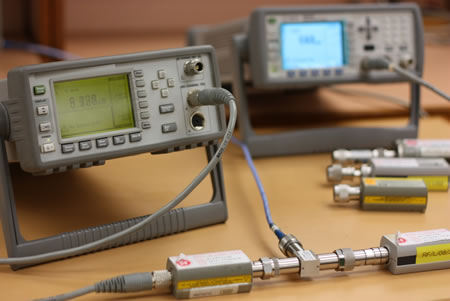 Calibration of RF Power Meter
Calibration of RF Power Meter
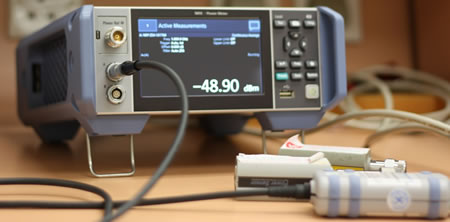 Calibration of RF Power Source
Calibration of RF Power Source
The Laboratory can provide calibration for RF power meters in the power range from 0.1 pW to 100 mW for frequency range from 100 Hz to 26.5 GHz and 10 µW to 1 mW for frequency range from 50 MHz to 40 GHz.
The calibration of power meters normally includes:
- Measurement at one frequency for selected levels (normally at 20 dB step); and
- Measurement at one power level (normally 10 mW) for a specified number of different frequencies. The number of frequencies tested will determine the calibration fee.
Thermistor Type RF Power Sensor
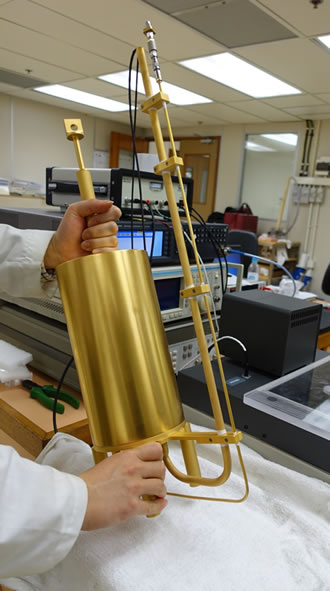 Microcalorimeter system up to 18 GHz
Microcalorimeter system up to 18 GHz
Thermistor type RF power sensor has high accuracy. A microcalorimeter system is used to establish traceability of RF power to DC power in the frequency range from 10 MHz to 18 GHz based on its DC power substitution capability.
The calibration factor of a thermistor type RF power sensor is given by the equation η(1 - ρ2), where η is the effective efficiency and ρ is the magnitude of the voltage reflection coefficient (VRC) of the input terminal of the sensor.
The effective efficiency of a thermistor type RF power sensor is measured by direct comparison with a reference power sensor. The reference power sensor was in turn calibrated by the microcalorimeter system – the primary standard for RF power.
The VRC of the thermistor type power sensor is measured by the laboratory network analyzer.
RF Millivoltmeter
The Laboratory can provide calibration of RF millivoltmeters in the range from 2.2 µV to 2.2 V and for frequency from 100 Hz to 1 GHz.
The calibration will normally include:
- Measurement at one frequency for selected levels (normally at 20 dB step); and
- Measurement at one voltage level (normally 1 V) for a specified number of different frequencies. The number of frequencies tested will determine the calibration fee.
Calibration Services for RF Voltage Source or Meter with 75 Ω Impedance
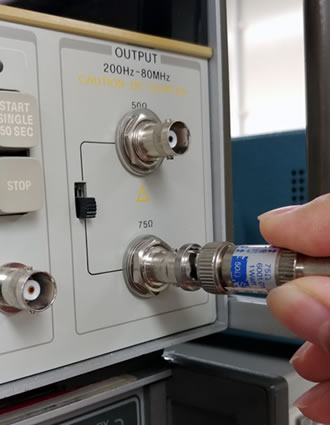 RF Voltage Source or Meter with 75 Ω Impedance
RF Voltage Source or Meter with 75 Ω Impedance
Signals between Radio Frequency (RF) equipment are transmitted by transmission lines such as coaxial cables. Coaxial cables with characteristic impedance of 50 Ω and 75 Ω are commonly used. The 75 Ω coaxial cable is often used for transmission of television signal while the 50 Ω coaxial cable has wider application areas. For correct operation, the output and input impedance of RF equipment must match with that of the coaxial cables they connected to.
The Standards and Calibration Laboratory (SCL) of ITC can provide calibration service for RF voltage source with 75 Ω output impedance in the range from 65 dBµV (1.8 mV) to 134 dBµV (5 V). For RF voltage meter with 75 Ω input impedance, calibration service is available in the range from 10 dBµV (3.2 µV) to 120 dBµV (1 V). The frequency range is from 300 kHz to 1 GHz. The power measurement method was used to measure the RF voltage.
The calibration will normally include:
- Measurement at one frequency for selected levels (normally at 20 dB step); and
- Measurement at one voltage level for a specified number of different frequencies. The number of frequencies tested will determine the calibration fee.
Fixed and Step Attenuators
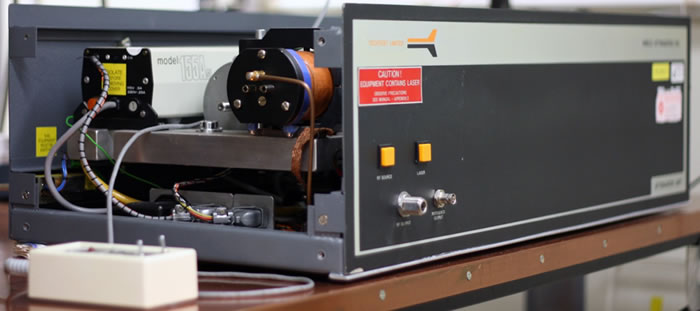 Waveguide Below Cut-off (WBCO) Piston Attenuator Measurement Standard for RF Attenuation
Waveguide Below Cut-off (WBCO) Piston Attenuator Measurement Standard for RF Attenuation
The Laboratory offers calibration service for coaxial fixed and step attenuators. The frequency range covers 300 kHz to 18 GHz and attenuation range of 0 to 70 dB.
RF Amplifiers
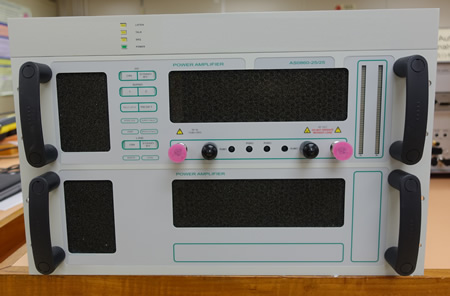 RF Amplifier
RF Amplifier
RF Amplifier is used to amplify an input power signal to a higher power level.
The Standards and Calibration Laboratory provides calibration service for RF amplifiers with input and output ports fitted with 50 Ω co-axial connectors.
The tests include measurement of power gain for frequency from 10 kHz to 40 GHz.